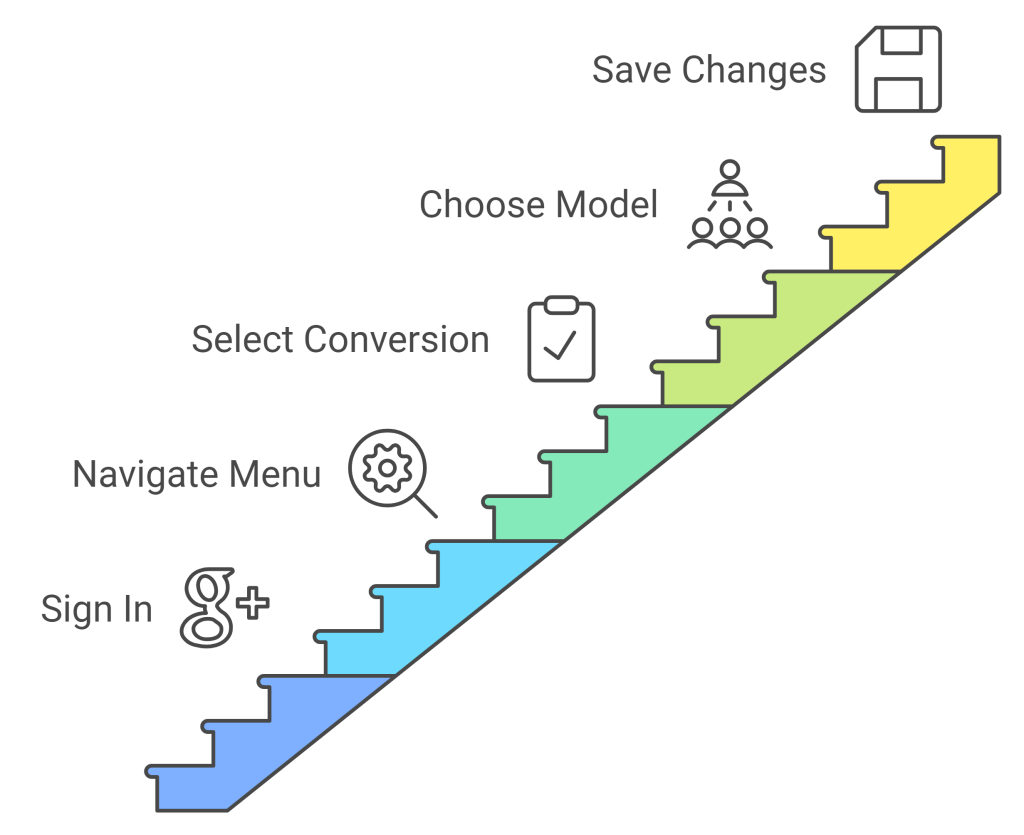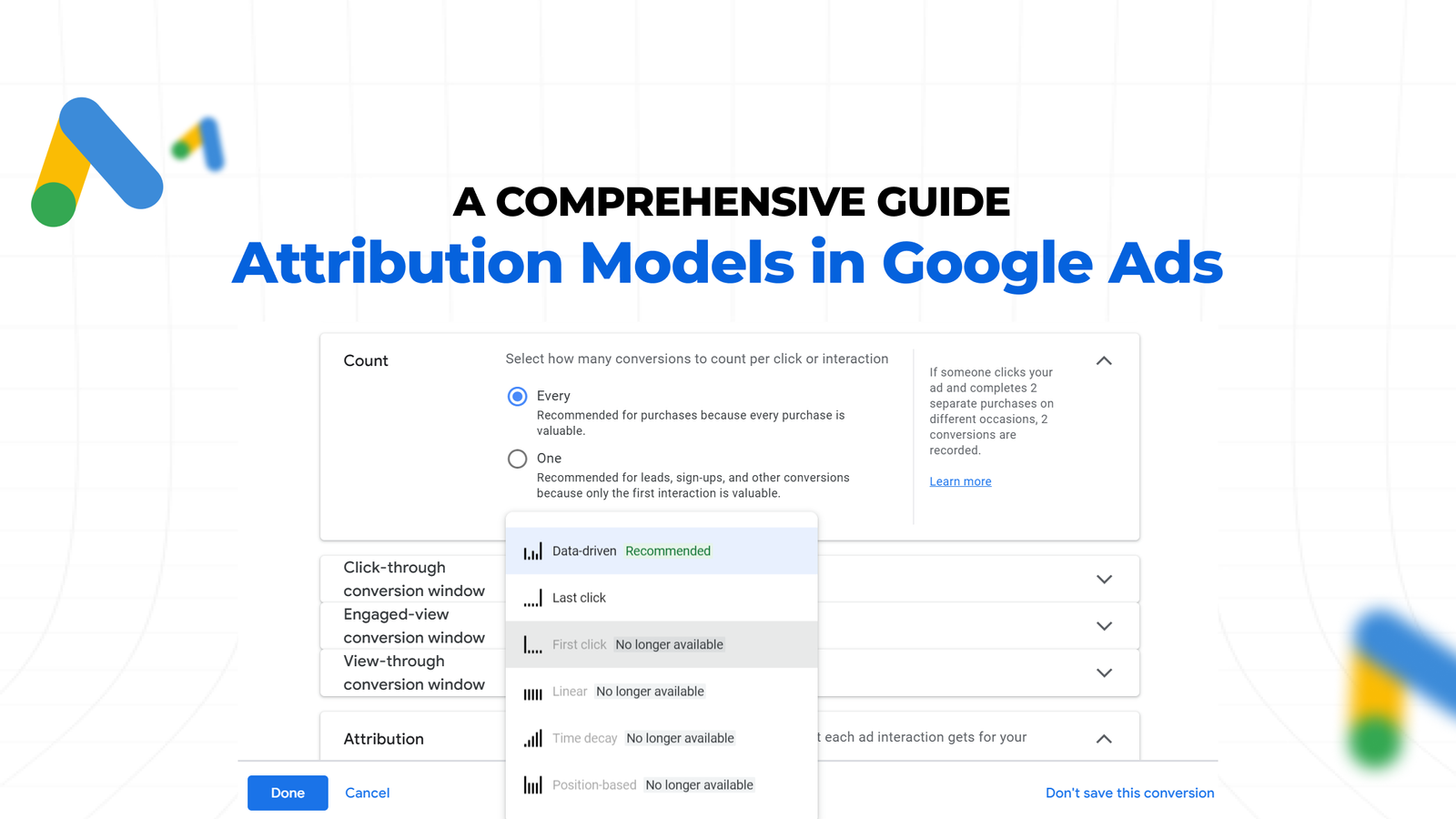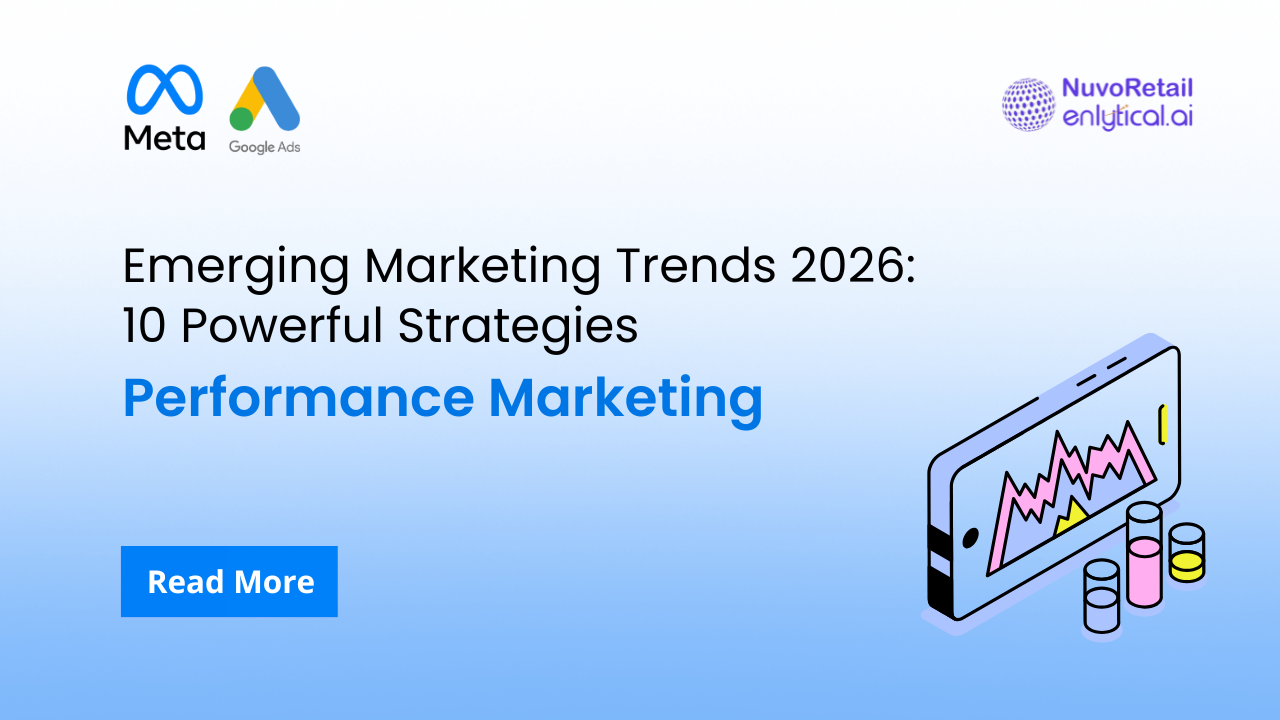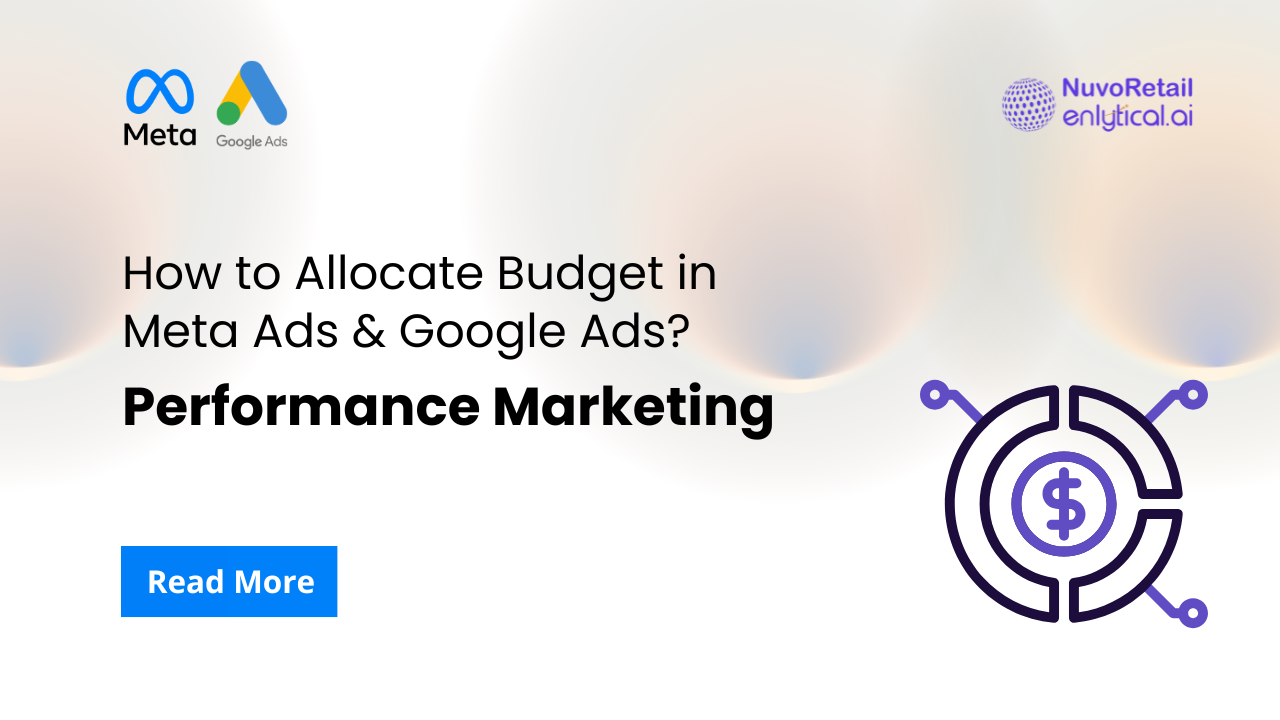When running Google Ads campaigns, understanding how your marketing efforts contribute to conversions is critical for success. That’s where attribution models come into play.
They help you identify which touchpoints are driving the most value and allow you to optimize your campaigns accordingly.
This blog will cover everything you need to know about attribution models in Google Ads, from what they are to how you can improve your data-driven attribution strategy.
What Are Attribution Models & How Do They Impact Reporting?
Attribution models in Google Ads determine how credit for conversions is assigned across different touchpoints in the customer journey. These models allow advertisers to identify the most effective ads, keywords, or channels that contribute to conversions, whether it’s a purchase, sign-up, or any other valuable action.
Attribution models impact reporting significantly by giving you insights into the conversion path. For instance, if a user clicks on your ad multiple times before making a purchase, an attribution model will help you understand which clicks were most impactful. Misattributing credit (e.g., giving full credit to the last click) may lead to poor decision-making and underperformance of key campaigns.
According to Google, businesses using data-driven attribution models in Google Ads have seen an 8% increase in overall incremental conversions and an 18% reduction in cost of sales compared to last-click models
How to Set Up Data-Driven Attribution in Google Ads
Data-driven attribution (DDA) is Google’s most advanced model. It uses machine learning to analyze past data and determine how different touchpoints influence conversions. Setting up DDA is simple, but it’s important to have a significant amount of conversion data to get the best results.
Steps to set up Data-Driven Attribution in Google Ads:
- Sign in to your Google Ads account.
- Navigate to the “Tools & Settings” menu and click on “Conversions” under “Measurement.”
- Select the conversion action you want to edit.
- Click on “Attribution model” and choose “Data-driven” from the list.
- Save your changes.

After enabling DDA, your conversion tracking will shift from single-click attribution (like last-click) to an intelligent model that accounts for multiple touchpoints, optimizing your reporting and performance.
Choose the Right Attribution Model
Choosing the right attribution model is essential for understanding the full customer journey and making well-informed decisions about your ad spend. Attribution models are typically divided into two categories: single-click attribution models and multi-click attribution models.
Single-Click Attribution Models
Single-click attribution models give all credit for a conversion to one touchpoint, either the first or the last.
Last-Click Attribution Model
The last-click attribution model assigns 100% of the credit to the final touchpoint before the conversion. This is the default setting in many advertising platforms, including Google Ads, but it has significant limitations.
- Pros: Simple and easy to understand.
- Cons: It ignores all previous interactions that might have contributed to the conversion.
While it’s a straightforward method, relying solely on last-click attribution can lead to over-investing in bottom-funnel activities while ignoring upper-funnel strategies like brand awareness.
First-Click Attribution Model
The first-click attribution model assigns 100% of the credit to the initial touchpoint in the customer journey.
- Pros: Useful for understanding the value of top-of-funnel activities, like awareness campaigns.
- Cons: It doesn’t consider how additional touchpoints or follow-ups contribute to driving the final conversion.
This model is often helpful for brands that prioritize prospecting new customers and measuring the effectiveness of awareness campaigns.
Multi-Click Attribution Models
Multi-click attribution models distribute credit across multiple touchpoints, giving a more complete picture of how various interactions contribute to conversions.
Linear Attribution Model
The linear attribution model assigns equal credit to every interaction along the customer journey.
- Pros: It provides a holistic view of how each touchpoint contributes to the conversion process.
- Cons: It doesn’t prioritize more influential interactions over others, which could result in under-optimizing key moments.
This model is ideal for campaigns that aim to maintain consistency throughout the entire customer journey, such as nurturing campaigns.
Time Decay Attribution Model
The time decay attribution model gives more credit to the touchpoints that are closest to the time of conversion. For example, if a customer clicks on an ad today but converts two weeks later, the clicks nearer to the conversion would receive higher credit.
- Pros: This model recognizes the importance of recent interactions that lead directly to conversions.
- Cons: It undervalues the earlier touchpoints that initially captured the user’s interest.
Time decay models are great for long sales cycles where conversions happen over an extended period.
Position-Based Attribution Model
The position-based attribution model splits credit between the first and last interaction, assigning 40% to both and distributing the remaining 20% across any interactions in the middle.
- Pros: This model balances between recognizing both the discovery and conversion touchpoints, making it useful for campaigns focused on both top-of-funnel awareness and final conversion activities.
- Cons: Intermediate touchpoints still receive less credit, which might lead to undervaluing some crucial mid-funnel efforts.
Data-Driven Attribution Model
The data-driven attribution model uses Google’s machine learning to analyze how different touchpoints impact the probability of conversion. It adapts based on historical data and performance patterns.
- Pros: It’s the most accurate model because it considers real user behavior and automatically optimizes based on data insights.
- Cons: Requires a significant volume of data to function effectively and may not be available for small accounts.
This model is suitable for businesses that have enough conversion data to leverage machine learning insights and want to improve the accuracy of their attribution.
As of May 2023, time decay, position-based, linear, and first-click attribution models are no longer available as new conversion actions in GA4. Google Ads will follow suit in June 2023. In September 2023, any conversion actions still using the deprecated models will be switched over.
How to Improve Your Data-Driven Attribution Model
- Increase Conversion Volume: Google recommends having at least 300 conversions and 3,000 ad interactions in the past 30 days for optimal data-driven attribution performance. This helps ensure the algorithm has enough data to make accurate predictions.
- Track All Conversions: Ensure all significant conversions are being tracked, from micro-conversions (like newsletter signups) to macro-conversions (like purchases). This provides a complete dataset for the model.
- Optimize High-Impact Keywords: Regularly review your keyword performance reports to identify which keywords are contributing most to conversions. Use DDA insights to bid more aggressively on high-impact keywords.
- Test Different Attribution Models: While data-driven attribution is the most advanced, it’s worth testing other models to compare how your reporting changes. Sometimes, combining DDA with position-based or time decay models can offer further insights.
- Leverage Google Analytics: Use Google Analytics in combination with Google Ads data to get a fuller picture of how users interact across different channels and campaigns. This will enhance the accuracy of your attribution model and improve your overall advertising strategy.
Conclusion
Choosing the right attribution model for your Google Ads campaigns is key to making informed decisions about your marketing strategies.
Whether you prefer the simplicity of single-click models or the detailed insights from multi-click models, understanding how different touchpoints contribute to conversions will lead to better optimization and higher returns.
By implementing data-driven attribution and regularly refining your model, you can ensure that your advertising budget is spent efficiently and your campaigns are performing at their best.




